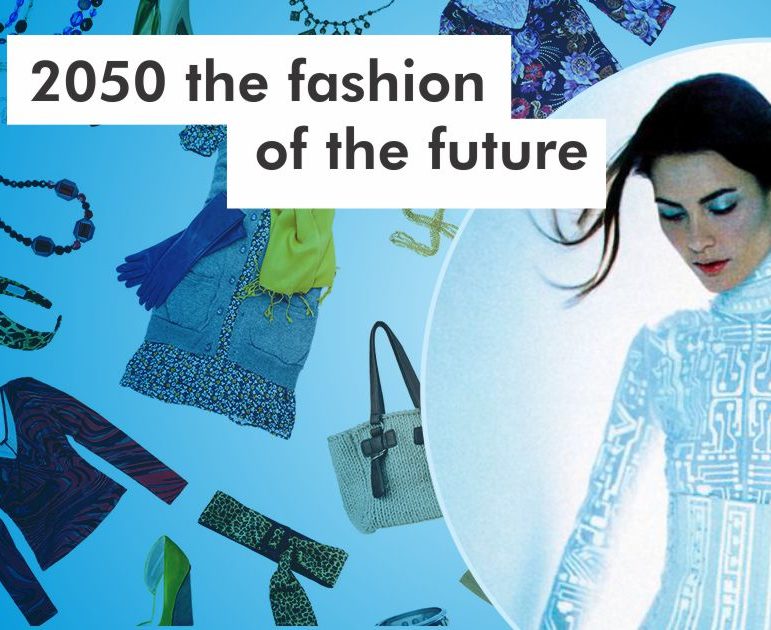If you guessing about wearable technology, then it is a thing of 2014. What if we tell you handbags will be grown from bacteria? Shocking isn’t! Join the line and read about the fashion forecasts for 2050.
Department Stores 2.0
Sit back and wait to experience the exciting ways to tempt you in 2050. A team of data scientists will be working towards what makes us happy. Shop assistants, both human and artificial, will focus on the art of pleasure providing rather than sales. Every idle lot in town will be utilized for food production and renewable power generation. Furthermore, the confusion of shopping will disappear.
High Streets Getting Smarter
Instead of entering a store, you’ll see what’s available right from outside through the shop window. You can quickly order items inside the store just by scanning your hand, and when you return home, your purchases will already be there waiting for you. For the shoppers, who wish to take time ordering; once ordered, your shopped items will be delivered in the span equal to an email.
Adaptable Wearable Technology
Can you imagine yourself being able to update your clothing any time and any day? Most of us will live near a printing facility or own a 3D printer at home. We’ve already seen fascinating manufacturing materials go from plastics to those used today. In addition, several fabrications will be used. With the versatility of 3D and wearable experimentation, you will be able to easily convert your floor-length skirt to mid-length.
Making of own Leather Trousers
By 2050, you may own a bio-fabricator, a machine that grows fabrics from microbial cultures. You may come across a dress manufactured using bacteria or mushrooms and transmit information related to the mood of the wearer. Probably, it is good news for Vegans that someday soon, leather trousers will be made from animal protein without going near the animal.
Supermodel NOT White and Skinny
With the mass movement around the globe, there will be new ethnicities making beauty unknowable than ever. Because there will be more women on the jury, the options for body alteration will increase, pushing the idea of a supermodel to the Next level. We are still not able to figure out the future beauty standard, but will not be a tall, skinny white girl for sure.
Socks will Recycle Themselves
Wearing for a while and dumping will be a thing of the past. You will soon experience 3D printers for recycling or reprinting old fabrics. By the late 2020s, we will most likely be in the era of simple customization and old garments will never be discarded. Fashion trends will not get banned but they will be made from paper, so that everything, that is old, can be dropped into domestic recycling.
Conclusion:
The fashion world of 2050 will witness groundbreaking changes, merging technology, sustainability, and diversity. From bio-fabricated accessories to customizable garments, innovation will reign supreme. Shopping experiences will become personalized and data-driven, while beauty standards will diversify. Sustainability will be central, with a focus on circular fashion and recycling.
As technology advances, fashion will not only reflect but also shape our choices, leading us towards a more connected and adaptable future. If you’re interested in fashion designing course fees and details, stay tuned for updates on the evolving landscape of fashion education.
FAQ:
1. What is fashion design?
Fashion designing is the art and profession of creating clothing and accessories, encompassing the design, production, and presentation of garments that reflect cultural, social, and individual identity.
2. Types of fashion designing courses?
Fashion designing courses vary in focus and duration, ranging from certificate programs to undergraduate and postgraduate degrees. Specializations may include fashion design, textile design, fashion merchandising, and fashion marketing, among others.
3. What are some key trends in fashion for 2050?
In 2050, we anticipate trends such as bio fabricated accessories, customizable garments, and diverse beauty standards to dominate the fashion landscape.
4. Will fashion education change in the future?
Yes, fashion education will likely evolve to incorporate new technologies, sustainable practices, and diverse perspectives, preparing students for the fashion industry of tomorrow.
5. How will technology shape the future of fashion?“
Technology will play a significant role in shaping fashion, enabling advancements like wearable technology, 3D printing, and data-driven design processes.


